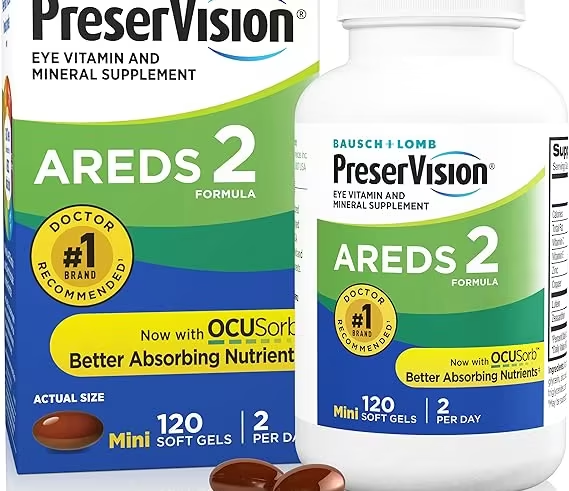
Chromium is an essential trace mineral involved in various metabolic processes, most notably its role in regulating blood sugar levels and enhancing the action of insulin. Its importance for overall health has been a subject of significant scientific research, particularly in areas related to glucose metabolism, weight management, and cardiovascular health. While chromium is naturally available in foods, dietary supplements have gained popularity for their purported benefits in addressing conditions like type 2 diabetes, insulin resistance, and metabolic syndrome. This comprehensive article dives into the necessity of chromium supplements for optimal health, evaluates the scientific evidence, and addresses common questions surrounding their use.
The Role of Chromium in the Human Body
Understanding Chromium’s Biochemical Functions
Chromium primarily functions by enhancing the action of insulin, a hormone critical for glucose and lipid metabolism. It forms part of the Glucose Tolerance Factor (GTF), a compound that facilitates the binding of insulin to its receptors on cells. This interaction increases glucose uptake by cells, which helps regulate blood sugar levels and prevent hyperglycemia. Key roles of chromium include:- Regulating Blood Sugar Levels: Chromium enhances insulin sensitivity, which helps maintain glucose homeostasis.
- Improving Lipid Profiles: It has been linked to reductions in total cholesterol, LDL cholesterol, and triglycerides, while improving HDL cholesterol levels.
- Promoting Protein and Fat Metabolism: Chromium aids in the metabolism of macronutrients, supporting energy production and storage.
Natural Sources of Chromium
Chromium is naturally present in various foods, including:- Whole Grains: Barley, whole wheat bread, oats.
- Meats: Beef, poultry, and liver.
- Fruits and Vegetables: Broccoli, potatoes, apples.
- Nuts and Seeds: Almonds, sunflower seeds, Brazil nuts.
- Seafood: Oysters, mussels, and tuna.
Chromium Supplements: Types and Forms
Chromium supplements are available in various forms, each differing in absorption rates and bioavailability. The most common types include:- Chromium Picolinate:
- Most widely used form in dietary supplements.
- Known for its high bioavailability.
- Commonly marketed for blood sugar regulation and weight loss.
- Chromium Chloride:
- Less bioavailable than chromium picolinate.
- Often included in multivitamins.
- Chromium Polynicotinate:
- Combines chromium with niacin to enhance absorption.
- Claimed to support metabolic health.
- Chromium Yeast:
- Naturally bound to yeast cells, making it highly bioavailable.
- Used in several clinical studies.
- Chromium Citrate:
- A newer form with moderate bioavailability.
Scientific Evidence on Chromium Supplements
Chromium and Blood Sugar Regulation
One of the most well-researched roles of chromium is its ability to enhance insulin action and improve blood sugar control in individuals with insulin resistance or type 2 diabetes.Clinical Studies:
- Anderson et al. (1997) found that daily supplementation with 200–1,000 µg of chromium picolinate improved fasting blood glucose, insulin levels, and HbA1c in individuals with type 2 diabetes.
- Kleefstra et al. (2007) conducted a placebo-controlled trial and found no significant benefit of chromium picolinate supplementation in improving glycemic control in type 2 diabetes patients. This highlights the mixed evidence on its effectiveness.
Chromium and Weight Management
Chromium is often marketed for its role in weight loss and body composition. It is believed to reduce fat mass while preserving lean body mass.Scientific Findings:
- A meta-analysis by Pittler et al. (2003) suggested that chromium picolinate has a modest effect on weight loss, with an average reduction of 1.1 kg over 10 weeks.
- However, the overall evidence remains inconclusive, and chromium should not be relied upon as a primary weight-loss strategy.
Chromium and Cardiovascular Health
Chromium’s role in improving lipid profiles has garnered attention for its potential cardiovascular benefits.- Ravina et al. (2005) demonstrated that chromium supplementation significantly reduced LDL cholesterol and triglycerides while increasing HDL cholesterol in patients with type 2 diabetes.
- However, more research is needed to confirm these findings and establish long-term safety.
Do You Need Chromium Supplements?
Recommended Dietary Allowance (RDA)
The Adequate Intake (AI) levels for chromium, as established by the National Institutes of Health (NIH), are:- Infants (0–6 months): 0.2 µg/day
- Children (1–3 years): 11 µg/day
- Adults (19–50 years): 25 µg/day (women), 35 µg/day (men)
- Older Adults (51+ years): 20 µg/day (women), 30 µg/day (men)
- Pregnant Women: 30 µg/day
- Lactating Women: 45 µg/day
Risk of Chromium Deficiency
True chromium deficiency is rare but can occur in cases of:- Poor dietary intake.
- Prolonged parenteral nutrition.
- Advanced age.
- Chronic illnesses like diabetes or metabolic syndrome.
Risks and Side Effects of Chromium Supplements
Chromium supplements are generally safe when taken in recommended doses. However, excessive intake can lead to:- Gastrointestinal Distress: Nausea, diarrhea, and abdominal pain.
- Kidney and Liver Damage: High doses may be toxic to the kidneys and liver.
- Allergic Reactions: Rare but possible with certain formulations.
FAQs
Q: Can chromium supplements help with type 2 diabetes?
A: Chromium may improve insulin sensitivity and glucose control in some individuals with type 2 diabetes, but its effectiveness varies. It should be used as an adjunct to standard treatments, not as a replacement.Q: Are chromium supplements safe for long-term use?
A: Chromium supplements are generally safe when taken within recommended doses. Long-term use should be monitored by a healthcare professional to prevent potential toxicity.Q: Can chromium supplements aid in weight loss?
A: Chromium may have a modest effect on weight loss, but it is not a substitute for a healthy diet and exercise.Q: Who should avoid chromium supplements?
A: Individuals with kidney or liver disease, pregnant women, and those taking medications for diabetes or thyroid disorders should consult a doctor before taking chromium supplements.Q: What is the best form of chromium supplement?
A: Chromium picolinate is the most studied and widely used form due to its high bioavailability.Bibliography
- Anderson, R. A., & Polansky, M. M. (1997). “Chromium picolinate supplementation and its effects on glucose metabolism.” Diabetes Care, 20(11), 1884-1890.
- Pittler, M. H., & Ernst, E. (2003). “Chromium picolinate supplementation for weight loss: a meta-analysis.” International Journal of Obesity, 27(4), 522-529.
- Kleefstra, N., et al. (2007). “Chromium treatment has no effect in patients with type 2 diabetes in a randomized, double-blind, placebo-controlled trial.” The Journal of Clinical Endocrinology & Metabolism, 92(2), 581-585.
- Ravina, A., et al. (2005). “Chromium supplementation in patients with type 2 diabetes.” Metabolism: Clinical and Experimental, 54(3), 317-322.
- Mertz, W. (1993). “The essential trace elements.” Science, 259(5100), 794-799.







